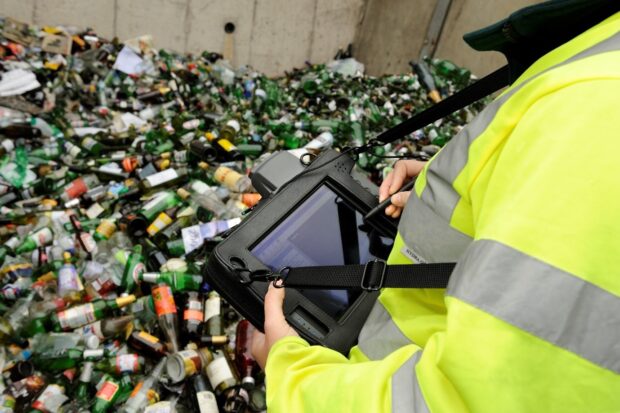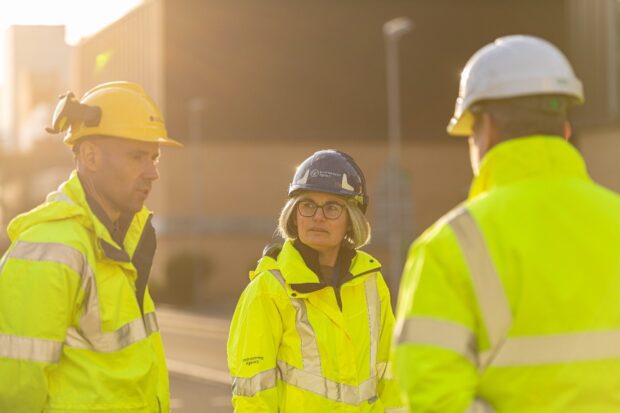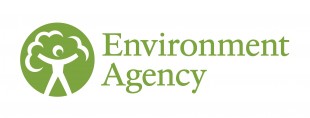With the launch of EA2030, the Environment Agency has set out a clear and ambitious strategy for the years ahead.
This vision responds directly to the climate and nature emergencies and outlines how we will work with partners to deliver lasting change. At its core is a recognition that environmental protection and economic growth must progress together.
Our work protects and enhances the environment while supporting sustainable growth, ensuring people, nature and businesses can prosper together.
EA2030 is built around three long-term goals:
- Healthy air, land, and water
- Sustainable growth
- A nation resilient to climate change
These goals reflect our dual purpose: to safeguard the environment while enabling a thriving economy. Achieving them requires collaboration, innovation and trust. EA2030 is not just a strategy for the future, it is grounded in the progress we have already made.
Over the past two years, we have taken decisive steps to improve our services, strengthen our regulation and build public confidence, whilst adhering to our six guiding principles in EA2030:
- Act with clarity
- Act with knowledge and conviction
- Focus on efficient and effective delivery
- Find solutions to problems old and new
- Work more closely with partners
- Serve with care
What follows is a snapshot of our journey, highlighting the foundations we are laying for the future.
Building confidence through openness
Transparency is central to effective regulation and sustainable growth. Our flexible and transparent regulatory regimes will be instrumental in transforming the UK into a leading global innovator for clean energy and the circular economy.
We are committed to acting on sound evidence and doing so in a way that is open and accountable. Our regulation is designed to support businesses: it must be clear, proportionate, outcome focused and enable compliance. It should also provide the certainty needed for investment, innovation and sustainable development.
We continue to keep stakeholders informed through data, reporting and proactive publication of regulatory information, including the Chief Regulator’s Report.
Case study: Publishing CAR forms online
In spring 2025, we began publishing Compliance Assessment Report (CAR) forms for those we regulate under the Environmental Permitting Regulations 2016.
By making them accessible online via the Public Register, we are reducing the administrative burden on both the public and our staff, while increasing transparency.
This change is part of a broader strategy to modernise regulation, improve access to information, and support the government’s growth agenda.
Our people are our greatest asset
Behind every improvement, every innovation and every regulatory decision are our people. They apply their knowledge, commitment and dedication to protecting and enhancing the environment every day.

Recent progress has been driven by new systems and policies, and by the individuals who design, implement and enforce them. From environment officers working in communities to technical specialists shaping future regulation, our people are the reason we can act early, improve performance and build trust.
Case study: Strengthening leadership and skills
In 2024, Dr Jo Nettleton was appointed as the Environment Agency’s first Chief Regulator, a role created to lead modern, future-focused, and effective regulation. As a visible and strategic leader, Jo is playing a pivotal role in ensuring the Environment Agency is recognised as a trusted and respected regulator.
Supporting her is the Chief Regulator’s Group. This group works closely with colleagues across the organisation to deliver effective regulation and engages with external stakeholders to share knowledge, experience, and learning.
A key focus of the Chief Regulator’s work has been to ensure our regulatory workforce is professional, resilient, and equipped for the future. To support this, Jo’s team has developed a comprehensive training programme in partnership with Cranfield University and Interaction Learning & Development.
These initiatives are part of a broader commitment to professional development, ensuring our people have the skills and confidence to deliver high-quality regulation in a rapidly changing world.
Outcome focused regulation
Outcome-focused regulation is at the heart of our mission - to protect and improve the environment while enabling sustainable growth. Guided by our Chief Regulator, we are shifting focus from process to performance, using intelligence and data to target interventions where they can make the greatest difference.
In the water sector, this means applying a systems approach that links permitting, compliance, and enforcement decisions to clear environmental outcomes such as reduced pollution, healthier catchments, and better resilience to climate change. Our control strategies, rooted in robust evidence, help ensure regulation delivers tangible results, not just tick-box compliance.
Case study: Water Industry Regulation Transformation Programme
Launched in 2023, we set ourselves ambitious targets through our Water Industry Regulation Transformation Programme to recruit more dedicated staff and significantly increase the number of water industry inspections. This is so that we could uncover more non-compliance, drive better performance from the industry and ensure it meets public expectations.
Key achievements so far include:
- Strengthened regulation of operator self-monitoring, including mandatory rescheduling of samples during no-flow events.
- Exceeding our target of 4,000 inspections by end of March 2025. Our target this year is 10,000.
- Recruitment of 440 additional staff to date.
- The development of new digital tools to improve transparency and our ability to turn data rapidly into regulatory intelligence so that we can more easily identify the highest priority issues.
Our teams, equipped with intensive training, continue to deliver on-the-ground regulation, and with improved data systems and through new powers we’ll get under the Water Special Measures Act we’ll be able to act more quickly and decisively.
We continue to modernise and expand our regulatory approach, and with the introduction of the recently announced Water Industry Enforcement Levy we’ll be able to further strengthen our enforcement regime, responding swiftly to intelligence from increased inspections and ultimately deter illegal activity. rm infrastructure investment.
Digital transformation is key
Digital transformation is enabling effective and efficient solutions to allow smarter, faster and more consistent regulation. It is helping us modernise permitting, improve waste tracking and strengthen regulatory frameworks. These tools are not just improving how we work; they are delivering better outcomes for people and the environment.

Digital transformation is not only modernising our operations but also advancing our broader mission, enabling sustainable growth, improving environmental outcomes, and shaping a resilient regulatory system fit for the future.
Case study: Regulatory Services Programme (RSP)
The Regulatory Services Programme (RSP) is an integrated programme designed to transform environmental regulation. RSP encompasses the digital regulatory needs of both the Plan for Water and Waste Regulatory Reform, ensuring a consistent set of digital capabilities and business processes across all areas of our work.
These digital transformation efforts have delivered significant benefits, both internally and externally:
- Improved user experience for external users through more services being available online
- Operational productivity gains of £5.3 million within the Environment Agency
- Delivering reusable solutions, saving £10.8 million
- Providing more than 40,000 data improvements during migration activities
By the end of Q4 2023–24, RSP had delivered £23.4 million in benefits, including an estimated £344,000 in savings to businesses.
Systems and services
Delivering effective, future-ready regulation in a rapidly evolving world requires more than policy and people. It demands robust systems and services that enable us to respond to environmental challenges, improve performance and build public trust.
At the Environment Agency, we are investing in the infrastructure that underpins our work. From permitting to water and waste regulation, we are modernising our operations to deliver greater consistency, resilience and impact.
Case study: Accelerated Permitting Transformation Programme
In recent years, our permitting service has faced significant capacity pressures, particularly in complex regulatory areas. We have listened to feedback from industry and recognise the need for improvement. Our commitment is clear: to deliver timely, high-quality decisions that support both environmental protection and economic growth.
Since 2022, we have made sustained progress:
- 79% of applications are now processed within target timeframes
- We have expanded our permitting workforce by over 150 staff
- Our backlog has been reduced by 50%
- Technical capability has been enhanced through specialist training and expert mentoring
- An early validation step identifies issues within the first month, reducing delays and improving the applicant experience
In 2025, we launched the Accelerated Permitting Transformation (APT) Programme, which is modernising our systems, creating a faster, smarter and more consistent permitting service.
Case study: Waste Regulatory Reforms Programme
We are working with government, businesses and stakeholders to deliver the Waste Regulatory Reforms Programme (WRRP), a major step toward transforming resource and waste management in the UK.
We’re helping to future-proof policies and develop innovative regulatory solutions by:
- Improving waste tracking: A new UK-wide digital system will track over 200 million tonnes of waste annually, supporting smarter regulation and a circular economy.
- Strengthening Carriers, Brokers, and Dealers (CBD) regulations: New permit and competence requirements will reduce waste crime.
- Streamlining waste exemptions: Bringing more activities under Environmental Permitting Regulations will cut illegal activity and protect health.
- Extended Producer Responsibility (EPR): We’ll regulate packaging producers, compliance schemes, and waste processors under new rules.
- Materials Facilities: From October 2024, stricter sampling will improve the quality of recyclables.
- Simpler Recycling: From April 2025, we’ll regulate non-household recyclable waste, supporting consistent kerbside collections across England. International Waste Management: We’re closing regulatory gaps on ‘green list’ waste exports to prevent exploitation.
Together, these reforms will modernise regulation, reduce crime, improve recycling and support a more sustainable, circular economy.

Partnerships and innovation: Collaborating for smarter solutions
Delivering lasting environmental outcomes is not something we can achieve alone. Whether tackling pollution, improving regulation, or preparing for future challenges, partnerships and innovation are essential to our success.
Much of our regulatory work is leading the way. For example, we are developing Best Available Techniques (BAT) that play a critical role in supporting decarbonisation technologies, helping to accelerate the transition to net zero while unlocking growth opportunities.
We engage with international organisations such as the Organisation for Economic Co-operation and Development (OECD), the European Union Network for the Implementation and Enforcement of Environmental Law (IMPEL), the European Network of Prosecutors for the Environment (ENPE), and the International Atomic Energy Agency (IAEA). These partnerships strengthen global environmental standards and enable us to learn from best practices worldwide.
We engage with businesses through the Regulated Business Forum, a platform for industry representatives and trade bodies to discuss regulatory activity and new initiatives. Our collaboration with other regulators, such as our joint pilot with the Office for Nuclear Regulation (ONR), allows exploration into the regulation of artificial intelligence in nuclear applications.
Case study: Nuclear regulators working together
As regulators of the nuclear industry, the Environment Agency, Natural Resources Wales and the Office for Nuclear Regulation (ONR) are working together to make sure that any new nuclear power stations built in the UK meet high standards of safety, security, environmental protection and waste management.
The generic design assessment (GDA) process allows the nuclear regulators to assess new nuclear power station designs at an early stage of the regulatory process and to provide confidence that these new designs can be operated in the UK. Early assessment of the design allows us to identify any potential design issues and ask the reactor design company to address them. This will help to avoid potentially costly and time-consuming changes when the reactor is being built.
Read more about our generic design assessment process in our blog: How the Environment Agency is assessing new nuclear power station designs.
We've been working closely with the ONR for many years on the hazards that climate change brings, issuing joint guidance, to make sure that we complement each other’s roles in this area. The ONR has just published a report on climate change following a two year targeted regulatory focus on the topic. We joined the ONR on inspections at EDF's Heysham 2, Sizewell B, AWE and Sellafield Ltd allowing us to gain insight into how the nuclear industry is managing climate change risks and impacts, and to identify learning for both the industry and regulators. This included consideration of environmental permitting and other requirements and identifying good practice.

Case study: The Chemical Assessment Unit
The Chemical Assessment Unit (CAU) at the Environment Agency is leading efforts to improve chemical safety while promoting sustainability. Working with international partners, CAU scientists are pioneering non-animal testing methods, such as fish cell assays and the use of invertebrates like Daphnia magna to assess bioaccumulation.
The team has also played a key role in managing risks from PFAS (per-and polyfluoroalkyl substances) chemicals. In 2023, they co-authored a regulatory analysis and are now working with the Health and Safety Executive on a UK REACH restriction proposal for fire-fighting foams. Published soil screening values for legacy PFAS are helping to identify low-risk sites and support safe waste recovery.
Looking ahead, CAU is preparing for future PFAS restrictions by improving understanding of their use and environmental release including a project measuring PFAS in stain-resistant clothing.
Case study: SEEBEYOND
The SEEBEYOND project, led by the Environment Agency in partnership with the University of Cambridge, is helping the food and drink sector go beyond compliance and improve sustainability performance.
The project is developing standardised environmental metrics across key areas such as greenhouse gas emissions, air pollutants, waste, water, and materials use. These metrics make it easier for businesses to measure, report, and improve their environmental impact.
SEEBEYOND is also addressing data challenges by trialling automated data exchange and exploring machine learning to enhance reporting accuracy. These innovations support greater transparency and traceability across supply chains helping to distinguish genuine progress from greenwashing.
Conclusion
We have made significant progress. But there is more to do. To be truly effective, we must continue our outcome focused regulation, supporting sustainable growth, driving better performance, and stopping criminal activity. We are actively contributing to current government reviews on regulation and stand ready to help deliver any recommended improvements.
We remain agile and adaptable, ready to regulate emerging technologies and keep pace with change. Through our Regulatory Futures programme, we are evolving our methods to be more digital, responsive, and proactive, enabling smarter decisions today that build a better tomorrow.
We do not underestimate the scale of the challenges ahead. But we are proud of the progress we’ve made and confident in our direction. We are committed to pushing the Environment Agency further, to be the best we can be, for people and for the environment.

1 comment
Comment by Ian Gregory posted on
I would like to see land owners doing more. Especially the removal of large fallen trees. No one does anything about them and they just lie in the water for years not always rotting if willow then actually growing across the river.